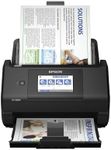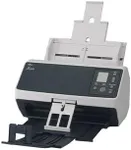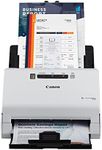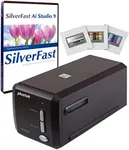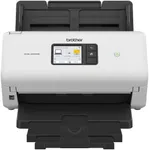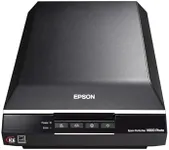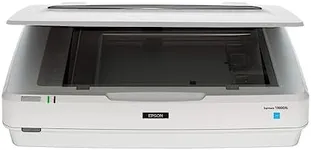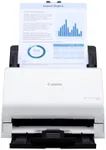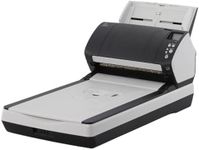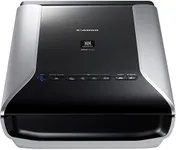Buying Guide for the Best High Resolution Scanners
Choosing the right high-resolution scanner can significantly impact the quality and efficiency of your scanning tasks. Whether you're digitizing photos, documents, or artwork, understanding the key specifications will help you make an informed decision. Here are the essential specs to consider when selecting a high-resolution scanner.ResolutionResolution refers to the number of dots per inch (DPI) that the scanner can capture. Higher resolution means more detail and clarity in the scanned image. For general document scanning, 300-600 DPI is usually sufficient. For photos and artwork, you might want a scanner with 1200 DPI or higher to capture fine details. Consider what you will be scanning most often to determine the appropriate resolution.
Color DepthColor depth, measured in bits, indicates how many colors the scanner can capture. Higher color depth results in more accurate and vibrant images. For basic document scanning, 24-bit color depth is adequate. For professional photo or artwork scanning, look for scanners with 48-bit color depth to ensure rich and true-to-life colors. Your need for color accuracy will guide you in choosing the right color depth.
Scanning SpeedScanning speed is measured in pages per minute (PPM) or images per minute (IPM). Faster scanning speeds can save time, especially if you have large volumes of documents to scan. For occasional use, speed may not be as critical, but for office environments or large projects, a higher PPM/IPM can be very beneficial. Assess how often and how much you will be scanning to determine the importance of scanning speed.
ConnectivityConnectivity options include USB, Wi-Fi, and Ethernet. USB is common and reliable for direct connections to a computer. Wi-Fi allows for wireless scanning and can be convenient for multiple users. Ethernet is useful for networked environments. Consider your setup and how you prefer to connect your scanner to your devices when choosing the right connectivity option.
Software CompatibilitySoftware compatibility refers to the scanner's ability to work with various operating systems and scanning software. Ensure the scanner is compatible with your computer's OS and any specific software you plan to use for editing or managing scanned images. Compatibility can affect ease of use and integration into your workflow, so check this spec carefully based on your technical environment.
Size and PortabilityThe physical size and portability of the scanner can be important depending on your workspace and mobility needs. Larger scanners may offer better performance but require more space, while portable scanners are compact and easy to move but might have limited features. Think about where you will use the scanner and how often you might need to transport it to choose the right size and portability.
Automatic Document Feeder (ADF)An Automatic Document Feeder (ADF) allows the scanner to handle multiple pages automatically, which is useful for batch scanning. If you frequently scan multi-page documents, an ADF can save time and effort. For single-page or occasional scanning, a flatbed scanner without ADF might be sufficient. Consider your scanning volume and frequency to decide if an ADF is necessary.

